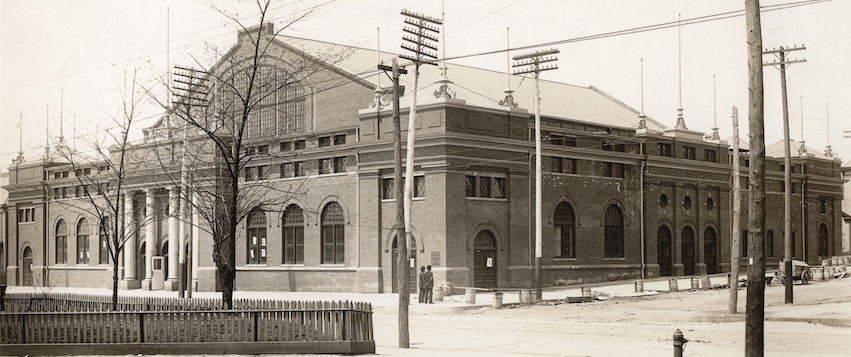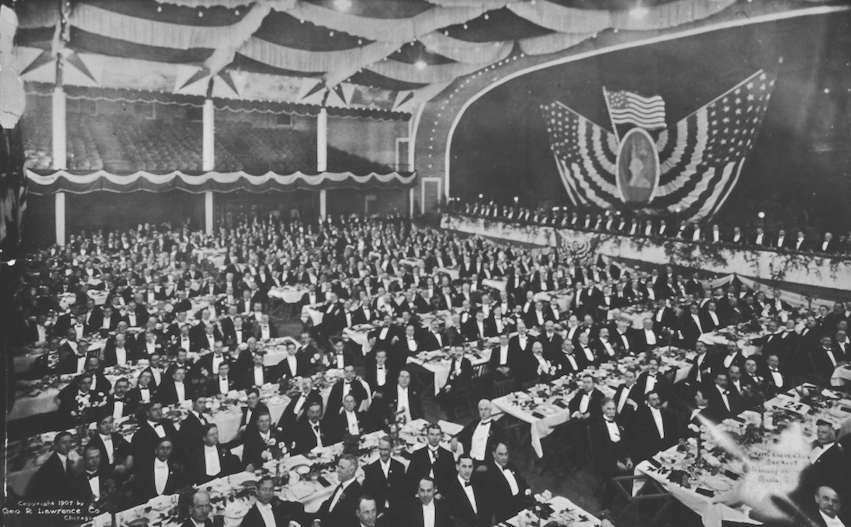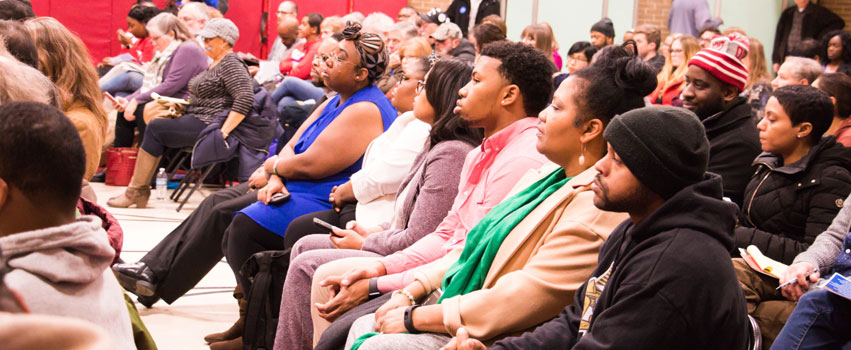Peoria’s Original Coliseum

By the 1890s, Peoria already had a reputation for being a desired location to hold conventions, but it lacked a single facility that could accommodate several thousand people. That changed when Central Railway Co., a Peoria streetcar company, offered to build a $60,000 structure at no cost to the city. The caveat? The city had to agree to give Central Railway Co. a 20-year contract with exclusive rights. The company fulfilled their end of the agreement and built Peoria a structure that would cost approximately $2 million in today’s dollars, including furnishings. The Coliseum opened on May 4, 1901, but even prior to that, the press was talking about it:
“Ranking as one of the chief convention centers of the country and entertaining scores of great gatherings each year, [Peoria] has been without a suitable convention hall. The Coliseum, built near the center of the city on North Adams Street at a cost of $60,000, represents a long struggle. The Coliseum is said to be one of the finest in the West… Architect Herbert E. Hewitt thinks that no other city in America of the size of Peoria can boast a finer convention hall.”
—St. Louis Republic, 1901
Peoria wasted no time taking advantage of its state-of-the-art facility and immediately began to secure large gatherings for the Coliseum. The national press wrote articles about Peoria’s Coliseum and its ability to attract conventions. Ten years after its dedication, the country was still talking about not only the Coliseum, but Peoria’s other offerings that made it a destination:
“In ten years Peoria has become the second city of the state for holding conventions and big gatherings. Nothing but satisfaction has resulted from the building of the Coliseum. It has been without doubt the deciding factor that has caused dozens of big meetings to come to Peoria. Once here their members have patronized Peoria merchants and Peoria industry. There has been practically no expense connected with their entertainment. And they have enjoyed facilities for big meetings that few cites the size of Peoria have been able to offer.”
—Evansville Courier & Press, 1911
Columnist Ted Robinson, reporting on the American Press Humorists convention held in Peoria two years later, noted:
“There is one thing that sticks out: Peoria’s hospitality, the hospitality of its business men, of its institutions, of its newspapers, of its atmosphere. Take it from me; cheap jokes at this atmosphere don’t go any more. It is not a distillery air. The visitor in the town thinks more of the wonderfully pure water than the proverbially pure whisky: more of the magnificent scenery, the bluffs, the stretches of rich prairie, the reaches of the beautiful river.”
—Cleveland Plain Dealer, 1913

The life of the Peoria Coliseum, however, was cut short in its prime when it was destroyed by fire in 1920. Not long before that untimely demise, in 1918 it hosted a meeting that any city, large or small, would be happy to host today. That event was the international tournament of the American Bowling Congress, where 6,000 bowlers on 900 teams in attendance competed for more than four weeks.
There would not be a replacement for the Coliseum until 1925, when the Peoria Armory was built on the same site. The Armory had a significantly longer history and hosted many more events, but in my opinion nothing could have been as grand as the Coliseum must have appeared to the citizens of Peoria at the turn of the last century. PM
Chris Farris is reference assistant librarian at the Peoria Public Library Local History and Genealogy Department.
